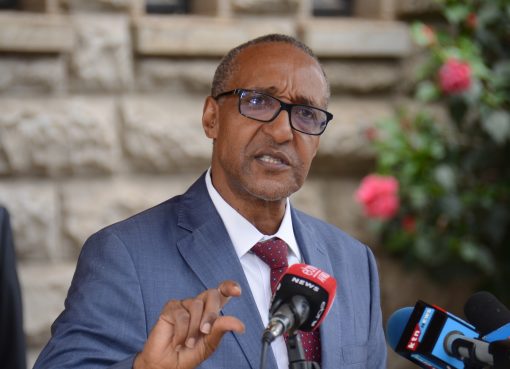The long-awaited upgrade of Lanet military airstrip into an International Public airport will start in the next two months after bids for the construction work were closed this week.
Governor Lee Kinyanjui said the construction of a Sh3 billion international airport at Lanet, Nakuru County, will be done in two phases.
Mr Kinyanjui said the first Sh 400 million phase will involve rehabilitation of the runaway, a fence, construction of taxiways and terminals, a military lounge, an air rescue centre and a fire fighting building. The second phase will entail expanding the runway from 1.7km to 3.6km.
The idea to construct an airport in Nakuru was first conceived in 2004 but has not been realized more than 15 years later.
“Contractors were last month invited to bid for construction work. We will be opening tenders in two weeks at the Kenya Airport Authority (KAA) headquarters in Nairobi.
“Lanet airstrip that has been serving the military will be expanded to become an international public utility to be used by civilian aircraft,” said the County boss.
The upgrade will also entail construction of military and civilian gates, setting up of a power substation and construction of a patrol road.
Once complete, the new airport will allow bigger cargo and passenger planes of approximately 40 to 100 tonnes.
Governor Kinyanjui said Nakuru, a tourism and horticultural hub, was lagging behind due to lack of an airport.
“Flower farmers in Naivasha will have a chance to exploit the huge market available by increasing their exports to Europe and the United States. Nakuru is a very critical area in the aviation industry thus the need for an airport.
“The airport will also make it easier for the county to receive hordes of international tourists. We need an alternative route for flights diverted from Nairobi,” Kinyanjui said.
Phase one will include the upgrade of the existing 1.7km airstrip to meet international standards and construction of terminal buildings. Phase two will be an extension of phase one to allow the airport to accommodate much larger aircraft and might include compensation of neighbouring residents whose land may be acquired for the expansion,” said the governor.
Mr Kinyanjui said the airport and the planned industrial park in Naivasha will be some of the crucial facilities that will come in handy in wooing investors to the county.
The airport, noted the governor, would be used to transport fresh farm produce, including flowers, abroad, adding that it would also make it easier for tourists to travel to the county.
“In terms of GDP (gross domestic product), Nakuru comes third after Nairobi and Kiambu and that is an assurance to residents to have funds to spend on various products,” he said.
As Nakuru gears for city status, the governor said his administration has lined up various projects including working closely with the Kenya Electricity Generating Company and the Geothermal Development Company to produce cheap power to lure companies to the proposed industrial park.
“The move to extend the SGR (standard gauge railway) to Naivasha is a big plus for the county and investors. The dry inland port is also operational in the Sub-County.

“During emergencies, flights at the Jomo Kenyatta International Airport (JKIA) in Nairobi are redirected to Mombasa, Kisumu and Eldoret, which are far,” observed the Governor.
In the past, investors pushed for the construction of the airport, saying it would boost flower exports and tourism in the region.
Currently, flower firms rely on refrigerated trucks to ferry produce to JKIA, more than 100 kilometers away, for export.
Nakuru County is well known for the production of close to 70 per cent of Kenya’s flower exports, as well as tourism.
Popular tourism sites include Lake Nakuru National Park, Hells Gate National Park, Lake Naivasha, Menengai Crater and Lord Egerton Castle.
In 2011, a 600-acre piece of land in Pipeline was acquired for the planned construction of the airport.
Some Sh250 million was allocated by the government for the preparatory work of the construction in the 2011/2012 fiscal year.
KCAA’s plans to build the airport on a 600-acre piece of land at Pipeline were abandoned after the National Environment Management Authority declined to approve the project on grounds that the site lays on a flamingo migratory route.
Since then, the project has never taken off. The airport will serve about one million travelers.
By Anne Mwale/David Mururia




